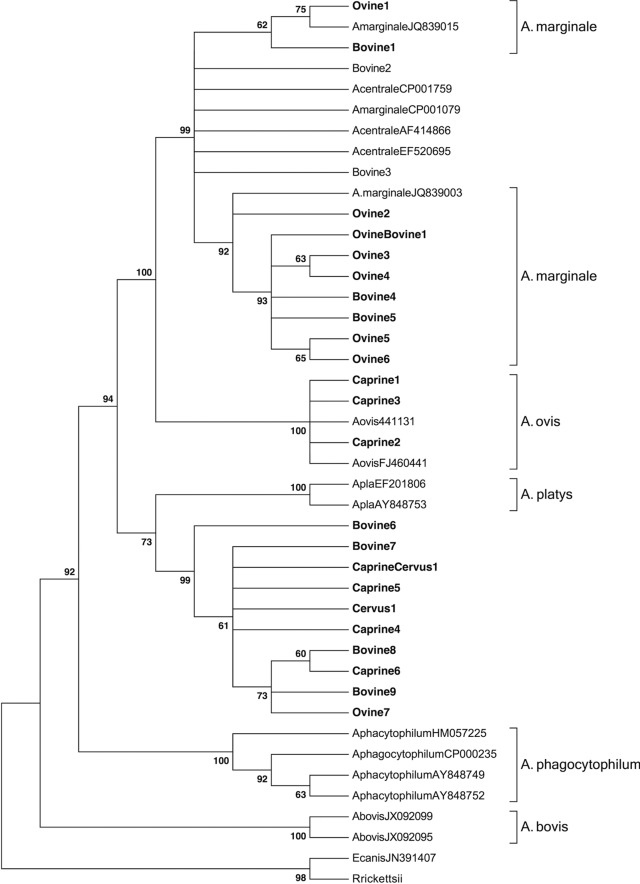FIG 2.
groEL-based phylogenetic analyses of the strains identified in the present study and of 16 sequences representative of the different species of the genus Anaplasma. As in the case of 16S rRNA-based analyses, both character-based and distance-based evolutionary analyses generated coinciding trees, but only the evolutionary history inferred using the neighbor-joining method is shown, with the sum of the branch length being 0.82216554. The evolutionary distances were computed using the Kimura two-parameter method and are in the units of the number of transitional substitution per site. The percentages of replicate trees in which the associated taxa clustered together in the bootstrap test (1,000 replicates) are shown next to the branches. All positions containing gaps and missing data were eliminated. There were a total of 470 positions in the final data set. E. canis and R. rickettsii were used as outgroups.

